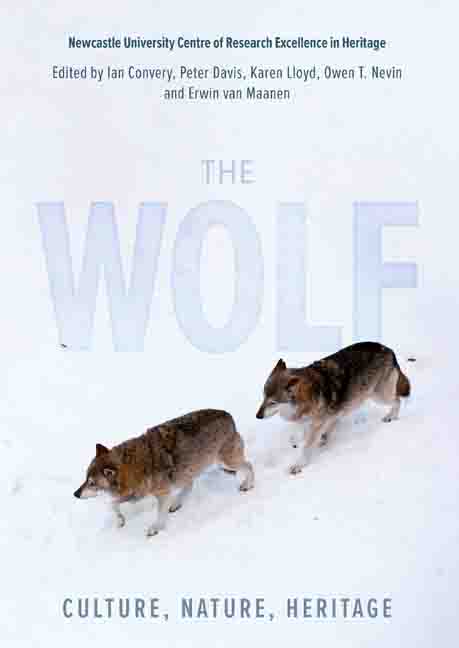Book contents
- Frontmatter
- Dedication
- Contents
- List of Illustrations
- Preface and Acknowledgments
- List of Abbreviations
- Poem: Trophic Cascade by Camille T Dungy
- Foreword
- Part I Imagining the Wolf
- Part II What Makes the Wolf
- Part III Return of the Wolf
- Part IV Personal Encounters
- Afterword: The Ecological Disadvantage of Living on an Island
- Glossary
- List of Contributors
- Index
31 - The Three-Legged Stool: Wolves, Shepherds and Sheep
Published online by Cambridge University Press: 10 January 2024
- Frontmatter
- Dedication
- Contents
- List of Illustrations
- Preface and Acknowledgments
- List of Abbreviations
- Poem: Trophic Cascade by Camille T Dungy
- Foreword
- Part I Imagining the Wolf
- Part II What Makes the Wolf
- Part III Return of the Wolf
- Part IV Personal Encounters
- Afterword: The Ecological Disadvantage of Living on an Island
- Glossary
- List of Contributors
- Index
Summary
The ruins of two stone huts perch on a rocky shoulder overlooking Haweswater Reservoir in the eastern corner of the Lake District National Park in north-west England. Hidden in the bracken lie the remains of older buildings, which presumably had their stones recycled into the two that still stand. The presence of window openings and internal divisions suggest that the huts were used for people to sleep in. Their location gives them a commanding view over the valley below, and into the wide, boggy expanse above. They make for a compelling photograph (Fig 31.1), the melancholy of their ruination set against the geological grandeur of the mountains beyond. Though now lacking roofs, the substantial stonework of these buildings means they will persist as reminders of where people lived and worked, and the ways in which they interacted with the Lake District landscape, well into the future.
My reason for singling out this particular pair of ruins from countless others dotted across the Lake District Fells is their name: High and Low Loup. There are various placenames in Scotland incorporating loup or loop, which refer to places where fish jump, or to loops in rivers. This is unlikely to be what High and Low Loup were named for, as they sit above waterfalls far too sheer for the leaping of any fish, and the two closest streams aren't notably sinuous. I can't find a reference to High and Low Loup in any of the Lake District placename books that exist, but I have a theory. Anyone with a passing interest in wolves will notice the similarity between the word loup and lupus, the Latin for wolf, the root of lupine, and the second half of the species binomial, Canis lupus. The name would be even more recognisable to the French, to whom a male wolf is un loup.
Cumbrian placenames are a fascinating muddle. Waves of settlement by different cultures have each left their mark. Across the valley from High and Low Loup, the long, straight ridge of High Street (partly obscured by cloud to the right of High Loup in Fig 16.1) is a prominent landmark. High Street's name is an anglicised version of Via Alta, given by the Romans who used it as a route between forts at Penrith and Ambleside.
- Type
- Chapter
- Information
- The WolfCulture, Nature, Heritage, pp. 363 - 370Publisher: Boydell & BrewerPrint publication year: 2023

